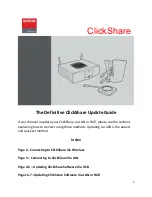
13
When pressing “S”, the split function gets enabled. The line below shows the split is active on one
address line, being A6. This means the UltiSIDs (both of them) get split in two, and the second part
of it gets enabled with address line 6 set (thus $D440). Note that this instance gets a “B”, indicating
the second half of the split UltiSID1. The same goes for UltiSID2, which now appears at $D460.
Similarly for a split on A7; the second half appears with an offset of $80.
And last but not least, split on _two_ address lines, causing the UltiSID to be split into four SIDs. In
this case A7 and A8, such that the second part appears at $D480 (A7=1), the third part at $D500
(A8=1), and the fourth part at $D580 (A7=1, A8=1). Also note the letters A, B, C and D.
Since the split settings are shared for both UltiSIDs, UltiSID2 also gets split in the same way. But
because its base address was set at $D420 (A5=1), the splits appear also at offsets where A5=1, thus
$D420, $D4A0, $D520, $D5A0. In total 8 SIDs, thus 24 voices and 8 independent filters.














































